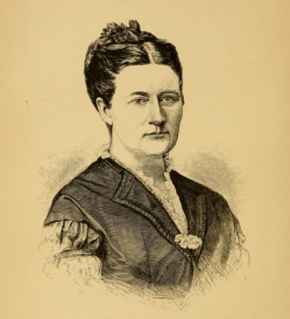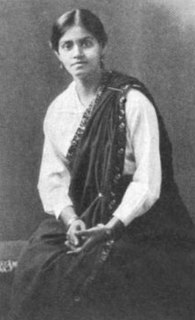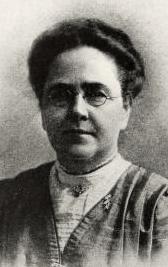Early Life
Childhood
Being the child of Jeremiah Phillips, a prominent religious missionary, James and his siblings were all very religious people, and James was taught from a young age to donate money to religious purposes whenever he made money. [1]
During his adolescence, James’ father sent him and his twin brother to America to escape the cholera outbreak in India and to receive a better education than what they could have received in India. During his early years in America, he became less religious. He had a belief that, if he were to be fully devout to Christianity in America, he would feel the need to return to India and become a missionary, like his father, rather than explore other options. [4]
Progressively, he became an even stronger supporter of Christianity, leading to him giving his own sermons. After his graduation from Bowdoin College, he did some work as a Pastor in a church in New York, then some more work in medicine and surgery to prepare for missionary work. He was accepted as a missionary by the Foreign Board in 1863. He married Mary R. Sales in 1864 and embarked on his missionary journey later that year.
Education
James L. Phillips received all of his schooling in America before he returned to India as a missionary. As an adolescent, he attended Whitestown Seminary in New York. Phillips then went on to attend college at Bowdoin College, which he graduated from in 1860. [3]
By 1864, Phillips obtained his MD from the College of Physicians and Surgeons in New York, [5] and was eventually bestowed a Divinity of Doctor (DD) degree from Bowdoin College in 1878 as “recognition of his distinguished missionary career." [1] By the time he was 38 years old, Phillips had received an M.A., LL.B., and M.D., as well as a D.D.. [2]
Life as a missionary
The call and journey
After becoming a doctor and being accepted as a missionary by the Foreign Board, Phillips moved back to India to extend his knowledge of medicine and religion to the people living there. Not only did he believe it to be his duty as a follower of Christ to help people that were suffering, but he was also content with the work. As he wrote in his journal, “The present appears happy only when doing my Master’s will, and the future looks hopeful only as fully dedicated to faithful and zealous labour for my Lord.” [1]
"I told the Lord that I would go anywhere or do anything if He would save me. From that night, I began to think of India’s needs and children, and gave myself up to India’s God and to them." [4] -James L. Phillips
Service
In India, specifically in Midnapore, Phillips traveled to visit many different jungle tribes, holding clinics, spreading religious services, and ameliorating the state of the villages. The two services he provided-medical and religious-had a tendency to overlap. Often, when providing medical services, he directed patients to the “Great Physician” for “diseases of the soul.” [1] Through this process, he converted many Indians to Christianity.
He continued this work for 11 years, before a short period of return to America in 1875. After his return to India in 1878, Phillips held his normal medical clinics and also opened the Bible School at Midnapore in 1879, working as its principal for 7 years. [3]
After another break from India, Phillips returned in 1891, where he began to offer classes at Union Chapel, Calcutta for students studying International Sunday School Lessons there. These classes were attended by the teachers of Sunday Schools. For two years, Phillips traveled throughout India for the sake of work for the Sunday School Union. He aided in starting up new Sunday Schools and compiling Sunday School Unions in different villages [1] and, by 1891, he had successfully launched the India Sunday School Journal. [2]
In 1893, Phillips left India to go on tours in other countries, raising awareness for the Sunday School mission and recruiting new missionaries. When he returned to India, he continued his tours throughout the country with the Sunday School mission until the end of 1894. He continued his missionary work until he physically could not anymore, before passing away in 1895. [1]
Return to America
Phillips' first return to America was in 1875. His return was ultimately based on his deteriorating health condition, for which he needed to receive medical services in America. During this three year break from his missionary work, Phillips was anything but idle. He provided his medical and religious services in America, as well as made plans for the future of his work in India. [3] His next big idea was to build a Bible School in India. Once this idea was approved, he proceeded to go on “lecturing tours” throughout America to raise funds and recruit missionaries for this cause. [1]
In 1885, Phillips once again went back to America due to his wife’s deteriorating health. Upon his return, he decided to extend his services, especially religious services, to America. Almost immediately after his return, he was invited to be a pastor of a church in Auburn, Rhode Island. After working in this position for a while, he became the chaplain of the State Institution of Rhode Island, where he aided in prison reform. He was later invited to Philadelphia to be the secretary of the Evangelical Alliance. [5] All the while he was extending his services in America, he was still fundraising for Indian children and Sunday Schools in India. The recognition of his efforts led to his becoming the secretary of the India Sunday School Union. [2]
Legacy
Throughout his 33 years of missionary work in India, [2] Phillips is most remembered through his physical establishments and his dedication.
“[James'] life was one of self-sacrifice and devotion so deep and full and rich, that to his dying day he never had a thought that he was doing anything nobler than the simple duty which the created owe to the Creator.” [3]
The Bible School at Midnapore
The Bible School in Midnapore was opened in May of 1879. The first year of its opening was a preparatory year for the teachers to get ready for students. Students, who were typically potential missionaries, started attending the Bible School in 1880. During winter months, students would do religious missionary work: preaching and spreading God’s message. For the rest of the school year, they would attend classes. [1]
James L. Phillips was the principal of the Bible School for a total of seven years, [5] but even in this position, he continued his own missionary work. The Bible School in Midnapore proved to be very successful and garnered a lot of attendees, who then went on to spread their learnings of Christianity to others in the area. [1]
The Sunday School Mission
By the end of Phillips’ many tours and efforts for the Sunday School, the total number of Sunday Schools in India grew to well over 5,548, with over 197,754 attendees. [1] Phillips also helped publish and wrote for the Indian Sunday School Journal, of which he was the editor, for many years, even when he was on his tours. [3]

Very Rev Dr Alexander Duff, was a Christian missionary in India; where he played a large part in the development of higher education. He was a Moderator and Convenor of the Church of Scotland and an unashamed scientific liberal reformer of anglicized evangelism across the Empire. He was the first overseas missionary of the Church of Scotland to India. On 13 July 1830 he founded the General Assembly's Institution in Calcutta, now known as the Scottish Church College. He also played a part in establishing the University of Calcutta. He was twice Moderator of the Free Church of Scotland in 1851 and 1873, the only person to serve the role twice.

William Carey was an English Christian missionary, Particular Baptist minister, translator, social reformer and cultural anthropologist who founded the Serampore College and the Serampore University, the first degree-awarding university in India.

Rev. Henry Gerhard Appenzeller was a Methodist missionary. He and four other missionaries, including Horace N. Allen, Horace G. Underwood, William B. Scranton, and Mary F. Scranton introduced Protestant Christianity to Korea from 1885 to 1902. He was known for his three major contributions to Korea: the Paichai College Hall, the First Methodist Episcopal Church of Seoul, and the translated New Testament.

Members of the Scudder family, spanning four generations, have spent a total of over 100 years as medical missionaries in South India.

William Fitzjames Oldham was an Indian-born British-American Bishop of the Methodist Episcopal Church and Missionary Bishop for Southern Asia. He distinguished himself as a missionary, an author and a church official. He was the founder of Anglo Chinese School in Singapore in 1886.
Medical missions in China by Protestant and Catholic physicians and surgeons of the 19th and early 20th centuries laid many foundations for modern medicine in China. Western medical missionaries established the first modern clinics and hospitals, provided the first training for nurses, and opened the first medical schools in China. Work was also done in opposition to the abuse of opium. Medical treatment and care came to many Chinese who were addicted, and eventually public and official opinion was influenced in favor of bringing an end to the destructive trade. By 1901, China was the most popular destination for medical missionaries. The 150 foreign physicians operated 128 hospitals and 245 dispensaries, treating 1.7 million patients. In 1894, male medical missionaries comprised 14 percent of all missionaries; women doctors were four percent. Modern medical education in China started in the early 20th century at hospitals run by international missionaries.
Chalmer Earl Stubbs was a Missionary of the Assemblies of God World Missions deputed to India.
Characteristic of Christianity in the 19th century were Evangelical revivals in some largely Protestant countries and later the effects of modern Biblical scholarship on the churches. Liberal or modernist theology was one consequence of this. In Europe, the Roman Catholic Church strongly opposed liberalism and culture wars launched in Germany, Italy, Belgium and France. It strongly emphasized personal piety. In Europe there was a general move away from religious observance and belief in Christian teachings and a move towards secularism. In Protestantism, pietistic revivals were common.
Telugu Christians or Telugu Kraistava are an ethno-religious community who form the second-largest religious minority in the Indian states of Andhra Pradesh and Telangana. According to the Census of India, there are over a million Christians in Andhra Pradesh constituting 1.5% of the state's population, although a decrease from the 1971 census figure which was 4.2%, as a result of low birth rates and emigration. However Christians from Dalit communities in Andhra Pradesh, who form the majority of the Christian population, are forced to declare their census religion as Hindus in order to obtain reservation benefits, a population estimated as 12-13% of the state.

Peter Percival was a British born missionary and educator who opened religious schools in Sri Lanka and South India during the British colonial era.) During his stay in Jaffna, he led the effort to translate the Authorized King James Version of Bible into the Tamil language, working with the Tamil scholar Arumuka Navalar – a Shaiva Hindu. Percival's work influenced Robert Bruce Foote. Percival began his career in British held Sri Lanka and Bengal as a Wesleyan Methodist missionary. He was instrumental in starting and upgrading a number of Christian schools within the Jaffna peninsula. After returning to England, he converted to Anglicanism. Subsequent to his posting in South India, he severed his association with the Anglican Missionary Society that had sent him to India and worked as an educator in Presidency College in Madras Presidency. He published English-Tamil and English-Telugu dictionaries as well as a number of books on Indian culture and religion. He died in 1882 in Yercaud in present-day Tamil Nadu.

Dr. Clara A. Swain was a physician and missionary of the Methodist Episcopal Church. She has been called the "pioneer woman physician in India," and as well as the "first fully accredited woman physician ever sent out by any missionary society into any part of the Non-Christian world". Her call to service in India fell from a need to have a female physician provide quality medical care to high-caste women, that were religiously secluded to zenana. Supported by the Women's Foreign Missionary Society of the Methodist Episcopal Church, Swain left the United States in 1869, for Bareilly, India, where she spent the next twenty-seven years of her life treating women and children from illnesses, while simultaneously working to evangelize natives.
Jeremiah Phillips(1812–1879) was an American Baptist missionary to the Santals under the Free Baptist Missionary Society in India.
Thomas Torrance (1871–1959), born in Shotts, Scotland, was a Scottish Protestant missionary to China. He was first sent there by the China Inland Mission (CIM), and later by The American Bible Society. He married Annie Elizabeth Sharp (1883–1980) of the CIM in 1911. He was the father of the 20th century theologian, Thomas F. Torrance.

The zenana missions were outreach programmes established in British India with the aim of converting women to Christianity. From the mid 19th century, they sent female missionaries into the homes of Indian women, including the private areas of houses - known as zenana - that male visitors were not allowed to see. Gradually these missions expanded from purely evangelical work to providing medical and education services. Hospitals and schools established by these missions are still active, making the zenana missions an important part of the history of Christianity in India.

Reverend James Cantine, D.D. was an American missionary, scholar, and traveler. While studying at New Brunswick Theological Seminary in New Jersey, he co-founded the Arabian Mission with John Lansing and Samuel Marinus Zwemer. The mission exists today as the American Mission Hospital of Bahrain. He was a missionary for forty years, which included establishing the first mission for the Reformed Church in Arabia, which was also the first mission in eastern Arabia. Between 1891 and 1929, he established mission posts, medical clinics, and churches in Arabia.

Charles Stewart Thompson was the first medical missionary in Kherwara in Rajputana, the Bhils region of Central India. His schools, famine relief centers, and medical service transformed care in the region.
William Burns Thomson was a Scottish medical missionary born in Kirriemuir, Scotland to Christian parents. Thomson dedicated his life to the spread of the gospel and to medical missionary work. His work as part of the Edinburgh Medical Missionary Society(EMMS) transformed the organization from its focus on the slums of Scotland to an international missionary aid organization. During his time with EMMS, Dr. Thomson advocated for missionaries across the globe, including Dr. Kaloost Vartan of the Nazareth Hospital and Dr. William Jackson Elmslie in Kashmir. Dr. Thomson also served as a pioneer for medical missionary training by creating the original EMMS training school at the Cowgate dispensary. This led to more training schools being created in other parts of the world, like Bombay(now known as Mumbai) and Calcutta(now known as Kolkata), India.

Frederick Charles Roberts was an English physician and medical missionary who served with the London Missionary Society in Mongolia and China. Roberts spent his entire career as a practicing physician in East Asia, dying in China after seven years of mission work. He is best known for his contributions as the sole medical provider and second director at the Tientsin Mission Hospital and Dispensary in China, where he treated an estimated 120-150 patients a day, and for his famine relief efforts in the rural districts outside Tientsin. He also taught at the first Western medical school in China and is the namesake of Roberts Memorial Hospital, which was established in T'sangchou, China in 1903.

Khanto Bala Rai was an Bengali Christian educator, head of the Mission Girls' High School in Midnapore beginning in 1923.

Mary Washington Bacheler was an American physician and Baptist medical missionary in India.













